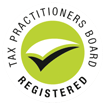Estimated reading time: 6 minutes
Understanding depreciation is essential for maximising tax deductions on rental properties, business equipment, and work-related purchases. This guide explains how depreciation works in Australia, which methods to use, and how to claim it correctly.
Key Takeaways:
- What is depreciation? Depreciation is the reduction of an asset’s value over time.
- What are Depreciation Formulas? There are two ways to claim depreciation on an asset:
- The Prime Cost method: You claim the depreciation steadily each year, over the effective life of the asset.
- The Diminishing Value method: You claim higher depreciation deductions in the earlier years and less as the asset grows older
- What is the effective life of an asset? The ATO defines an asset’s effective life as the period of time it is considered suitable for its intended purpose.
Now for a deep dive into claiming Depreciation:
First things first: What is depreciation?

Okay, to make things very simple, let’s look at depreciation this way:
- A new split system air conditioner for an investment property might cost around $1,800. After 4 years, you wouldn’t expect to sell it for the original price due to the wear and tear of use over those 4 years.
- The Australian Taxation Office (ATO) considers the effective life of an air conditioner to be 8 years. (More on that below.)
- Therefore, after 4 years, which is halfway through its effective life, the air conditioner’s value has depreciated in value by 50%, to around $900.
How to calculate depreciation
The ATO has listed the useful or ‘effective’ life of all assets that can be depreciated for tax purposes. The effective life refers to the number of years the asset is expected to work (tools, appliances, laptops etc.) or be fit for purpose, (travel bags, carpets, office furniture etc.).
ATO depreciation rates for a few other common purchases:
- Mobile phone – 3 years
- Digital camera – 5 years
- Electric hand tools (drills etc.) – 5 years
- Printer – 5 years
How does depreciation work?
Items you purchase for work, your investment property or your business can be claimed as a tax deduction. However, any item that costs more than $300 isn’t claimed in full straight away. Instead, you claim it over the effective life of the item. This means you claim the deduction across multiple years and tax returns.
Depreciation in practice:
Going back to our air conditioner, rather than claim the full $1,800 on your next tax return, you claim the cost over an 8-year period, which is its effective life.
Which depreciation formula should you use?
There are two depreciation formulas you can use to calculate depreciation. Each is suited to different types of assets:
1. The Prime Cost method: (Also referred to as ‘straight line depreciation’.)
This method works on the assumption that the value of an asset declines steadily over its effective lifespan.
To calculate depreciation using the prime cost method, you need to divide the original cost of the asset by its effective lifespan. This will give you an annual amount
2. The Diminishing Value method
This method assumes the value of the asset will decrease faster earlier in its effective lifespan. This method is often favoured as it gives a better tax deduction in the early years of owning the asset.
What can you claim depreciation on?
Rental Properties
If you own a rental property, depreciation is a good way to minimise your tax liability.
There are two main types of depreciation you can claim on property:
- Capital Works: The building’s structure and any permanent fixtures, such as the walls, roof and floor. You claim capital works depreciation on properties built from 16 September 1987 onwards, at a rate of 2.5% per year, for 40 years.
- Plant and Equipment: The non-structural items within the building, such as dishwashers, water heaters, washing machines, air conditioners, carpets, and blinds. The depreciation rates vary on these items, depending on their effective life.
Depreciation Schedule (Quantity Surveyors Report):
What is it and do you need one?
If you own an investment property, you should get a quantity surveyor to create a Depreciation Schedule – sometimes referred to as a Quantity Surveyor’s Report – before you start renting it out. The schedule details the tax deductions you can claim over time on the property itself, as well as the appliances and equipment within it. Without the report, you could miss out on valuable deductions that can offset your rental income over a good number of years. The good news is the cost of the tax depreciation schedule is also tax deductible!
Work-related expenses
Depreciation is an important aspect of work-related tax deduction claims. If you purchase tools or equipment for work that cost more than $300, such as a laptop, phone or power tools, you can claim depreciation on these items on your tax return each year. Many common work-related purchases have a relatively short lifespan. So, if you bought a laptop for work at a cost of $1500, you claim the cost of the laptop over the life of the laptop, which is only 2 years.
Note: If you use a work-related asset, like a laptop for personal use as well as work use, you must only claim the work-related percentage. So, if you used the laptop for work 50% of the time and for personal use 50% of the time, you should only claim the depreciation on $750. Not the full $1,500 purchase cost.
Business expenses
When you’re in business, especially when you’re first setting out, expenses for equipment, appliances, tools, office furniture and even vehicles are essential costs. However, it’s not easy to see that money disappear, so claiming depreciation on the assets you bring into the business is a great help when it comes to tax time.
Record keeping
As with anything to do with tax, it’s important that you keep a record of everything you purchase. You should keep records for 5 years from the purchase date of each item you wish to claim depreciation on.
You’ll need a record of:
- What the item is
- Date of purchase
- Date of first use
- Effective life
- Cost (including installation or set up fees)
- Percentage of personal use
- Chosen claim method (Prime Cost/Straight Line or Diminishing Value)
Final note:
When you engage Etax Local to look after your taxes, you don’t need to calculate depreciation yourself! Simply tell us the details listed in the record keeping section above and we’ll work it all out for you.
 Tax Agent
Tax Agent



